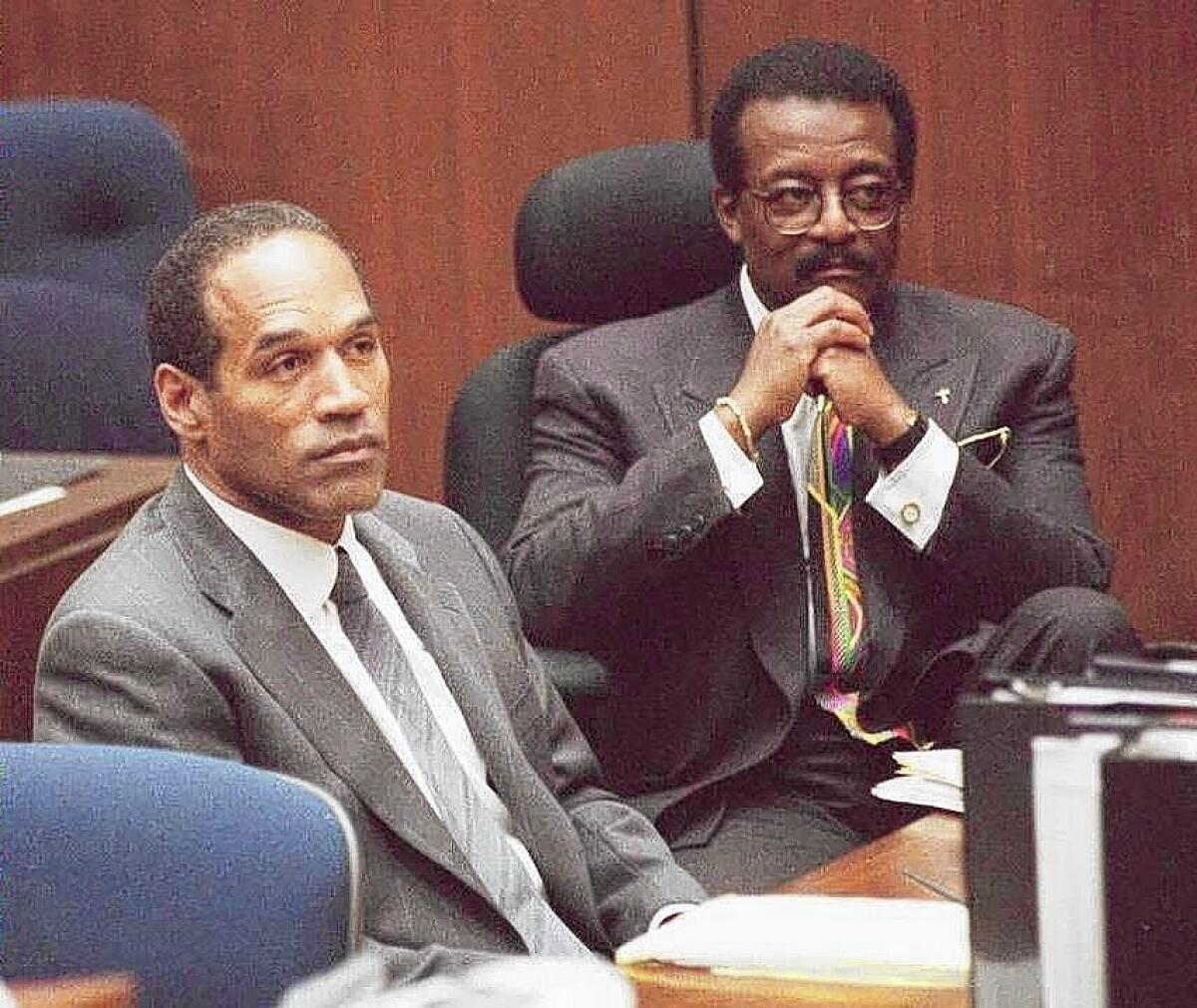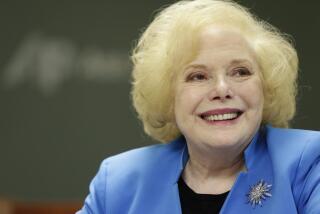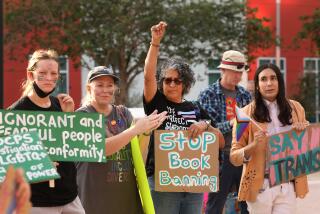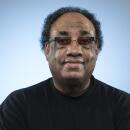‘O.J.: Trial of the Century’ revisits murder case as it unfolded

As one of the most notorious legal events in American history, the murder trial of O. J. Simpson exposed deep national rifts in race, gender and class and helped usher in a new era in media.
A new documentary, “O.J.: Trial of the Century,” which airs on the Investigation Discovery cable channel Thursday — the grim 20th anniversary of the slayings of Nicole Brown Simpson and Ronald Goldman — revisits the case that fixed the country’s gaze on a Los Angeles courtroom two decades ago for more than eight months. But instead of the customary recollection or analysis from central players in the drama or experts, the program tells the Simpson story in real-time stitched together from news reports from the day.
“This is the case that started TV trial coverage,” said Nicole Rittenmeyer, the filmmaker. “It had a Shakespearean quality — this kid from the projects who’s fantastically good-looking makes good, and then he’s accused of murder. You couldn’t script it. It brought up issues of race, money, domestic violence. It was really the start of the 24-hour news cycle.”
Rittenmeyer and her Brooklyn, N.Y.-based Every Hill Films associates spent a year culling through more than 2,500 hours of primarily TV news footage to make the documentary.
All the events that tilted the tragedy into the surreal are there — the slow-speed freeway chase of Simpson in a white Ford Bronco as crowds cheered him; Simpson in a courtroom trying on the bloodstained glove found at the murder scene; and finally the wildly contrasting reactions from blacks and whites to the verdict.
“What we’ve done is an experimental kind of immersive thing,” said Rittenmeyer, who used similar real-time approaches with her earlier films “9/11: The Days After” and “JFK: 3 Shots that Changed America.” “We all have our impressions of what happened. Seeing it in hindsight has real value and is instructive, and gives the opportunity to come away with a reality judgment.”
Simpson was acquitted in 1995 by a mostly black jury of the charges, an outcome met by jubilation from many African Americans and stunned dismay from many whites.
Although not included in the documentary, which concludes with the end of the first trial, Simpson was later found liable for the deaths of his ex-wife and Goldman in a civil trial. The former NFL star and TV personality is currently serving a nine-to-33-year sentence in a Nevada prison after being convicted of kidnapping, armed robbery and other charges.
Producing the project proved to be its own kind of trial for Rittenmeyer and her team.
“We had to go through months and months of boring trial footage that we then had to condense down to something that wasn’t boring,” she said. Many who figured in the trial are barely glimpsed, such as Simpson houseguest Kato Kaelin, who parlayed his fame from the trial into various television gigs, due to time constraints.
In addition to the news footage that was actually aired in their day, the documentary also contains many unguarded, off-camera or rarely seen moments. There are sequences of an incredulous Los Angeles Dist. Atty. Gil Garcetti surprised at the throngs of Simpson fans lined the streets during the Bronco chase, and another of Simpson attorney Johnnie Cochran attending an African American church service where the congregation prays for him to win the case.
And later, there’s a telling scene of chief prosecutor Marcia Clark lashing out with expletives at reporters as she leaves a residence for the reading of the verdict.
Some two decades later, it’s interesting to see what personalities from the trial footage remain in pop culture in form or another. The documentary shows a pre-TMZ Harvey Levin, who
was then a reporter for KCBS, and also Simpson’s friend Robert Kardashian, the late father of Kim Kardashian.
Not all of the documentary is devoted to the big names and personalities. There’s plenty of ordinary citizens watching the media coverage in restaurants, bars and gyms.
“It was important to show all the nuance,” Rittenmeyer said. “Watching the trial is a major theme, how this whole proceeding captured national attention.”
More significantly, the program reveals in documentary-vivid fashion how the murder trial became a national referendum on race and justice in America.
“It was the first breaking news story for the cable era,” said Robert Thompson, director of the Bleier Center for Television and Popular Culture at Syracuse University. “Much of it was because the trial was on camera, and everyone involved in the courtroom was performing as if they were stars of the highest-rated miniseries ever. It sparked a lot of debates about race which had started with the Rodney King trial. And it raised consciousness in spite of the fact that it was conducted in a circus atmosphere.”
Rittenmeyer was a graduate film student at Columbia College Chicago when the Simpson verdict was read. “I was in my late 20s watching in a room filled with privileged white kids,” she said. “There was just no escaping the case, and the evidence seemed so overwhelming. When the verdict was read, I was confounded by how it could have happened.”
“One of my goals was to get back to that feeling,” she said. “People can watch it now, and they may not agree, but there is a lot more nuance and complexity than we may have noticed when it was happening.”
------------
‘O.J.: Trial of the Century’
Where: Investigation Discovery
When: 8 p.m. Thursday
Rating: TV-14 (may be unsuitable for children under the age of 14)
More to Read
The complete guide to home viewing
Get Screen Gab for everything about the TV shows and streaming movies everyone’s talking about.
You may occasionally receive promotional content from the Los Angeles Times.







